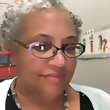The Review Is Critical
Critical reviews provide a means to uncover the way language and information is used to inform, position, and empower.

Critical book reviews move readers beyond an analysis of a story’s narrative to an understanding of the way they as readers are being positioned through the text. Based in critical literacy theory, critical reviews are political and social expressions of power, ideologies, and visibility.
Traditional reviews limit themselves to how the story is presented by discussing characters, themes, plots, and setting. Critical book reviews go beyond this by focusing on how people and events are represented, whose voice is missing from the story, and the ways in which power is enacted. This reading strategy of the word and the world has implications across every form of literacy as it empowers readers to more fully realize the architecture of the information presented.
Reviewers may use something similar to the framework developed by Nathalie Wooldridge (2001) to ask questions such as: What assumptions are made by the text? What worldview is presented? What moral or political questions are supported? Questioning text, all text, in this way identifies who is being empowered and whose voice is being ignored. Such questioning is imperative as economic and political power becomes more concentrated in the United States. It uncovers issues based in gender, race, class, disabilities, and sexual orientation.
Not many children’s literature reviewers use this technique for reviewing books. On my blog, CrazyQuiltsEdi, I do. I often hear from people that after reading these reviews that they come to perceive stories in new ways.
I find that I learn much from colleagues who review in a similar manner. Such was the case when Dr. Laura Jimenez reviewed Tee Franklin’sBingo Love (Image Comics, 2018) on her blog, BookToss. While I was stuck on shortcomings in the text’s narrative, Jimenez identified what was present in the story when she wrote, “Look at all these women. Look carefully. What do you see? I see a multitude of shades, body types, ages, and sexual identities in one space enjoying life and celebrating love. This graphic novel celebrates the loving relationship of two older, black lesbians.” She described the female worldview presented in the book, a view that is typically silenced in U.S. society. Her view opened up the story for me.
Dr. Debbie Reese informs us all on critical reviews. American Indians In Children’s Literature , established in 2006, provides critical perspectives and analyses of indigenous peoples in children’s and young adult books, the school curriculum, popular culture, and society. Dr. Reese consistently provides thoughtful and meticulous critical reviews that examine the possible readings of a situation, event, and character from her perspective as a Nambe Pueblo woman and explains her thinking.
The We’re The People Summer Reading List is created by a group of librarians, educators, and scholars who compile a select list of books that can be appreciated by any child. Books created by IPOC authors or illustrators are discussed among the committee, which requires a minimum of two critical readings before a book appears on the list to help insure that their selections are free of biases, misrepresentations, and microaggressions. While Disabilities in Kidlit is not currently updating, Ya Pride is—monthly; both are accessible sources for reviews of older books.
DeColores: The Raza Experience in Books for Children reviews and critiques children's and young adult books about Raza peoples throughout the Diaspora. This blog questions why a text is written in a certain way while identifying ideological positions. Beverly Slapin, editor of the blog, recently reviewed Yuyi Morales’s Soñadores. (Neal Porter/Macmillan, 2018;) While her review was overall positive, she did note how the choice regarding the Spanish in the text altered the position of the text. “Yuyi wrote her autobiographical story in her second language, and Mlawer then translated it into Spanish. Although I would prefer to have seen Yuyi’s story in her own Mexican vernacular Spanish, I can understand the publisher’s wish to make the Spanish ‘universal.’”
The librarians at Reading While White present their worldview in the very title of their blog, which strives to confront racism in the field of children’s and young adult literature. They manage to employ their privilege as allies and co-conspirators as they dialogue in the ongoing struggle for authenticity and visibility in books and support opportunities for First Nations/Native people. They consider all aspects of the children’s and young adult book world, holding everyone in that work accountable. They remind us who remains invisible in youth literature.
The Hijabi Librarians look at Muslim representation in contemporary literature by questioning assumptions and ideological positions in the text. They give voice to works that feature the Muslim experience, recognizing and celebrating those that get it right. In a recent Book Discussion post about Hena Khan’s Crescent Moons and Pointed Minarets (Chronicle, 2018), the members discussed all aspects of the book from the cover and interior images to the text and the author’s notes. Their reviews call to mind how imposing U.S. culture can be when we tell someone else’s story; something as minute as the shape of a garden’s layout is cultural. The post questioned a comment someone made in reference to the attire in the book. What is “modern Muslim attire?” Whose modern? Whose view of the world? These discussions enlighten us all.
Reviews from these and other blogs are curated onto See What We See–Social Justice Books , a clearinghouse inspired by the Council on Interracial Books for Children (CIBC). Their database allows those who work directly with children to be able to make informed book selections and it provides a mechanism to hold the publishing industry accountable for what it produces.
Critical reviews help keep us all better accountable in the stories we tell because they provide a means to uncover the way language and information is used to inform, position, and empower. Critical literacy allows us to read the word and the world.
 Edith Campbell is an assistant librarian in the Cunningham Memorial Library at Indiana State University. She is on the Advisory Board for the Research on Diversity in Youth Literature and for the Journal of Research on Librarians and Young Adults. She blogs at CrazyQuiltsEdi.
Edith Campbell is an assistant librarian in the Cunningham Memorial Library at Indiana State University. She is on the Advisory Board for the Research on Diversity in Youth Literature and for the Journal of Research on Librarians and Young Adults. She blogs at CrazyQuiltsEdi.
RELATED
Some of Us Are Brave
Hail Mariam
Brady Mason’s Perfect Fit
The job outlook in 2030: Librarians will be in demand
The job outlook in 2030: Librarians will be in demand
ALREADY A SUBSCRIBER? LOG IN
We are currently offering this content for free. Sign up now to activate your personal profile, where you can save articles for future viewing






Add Comment :-
Be the first reader to comment.
Comment Policy:
Comment should not be empty !!!